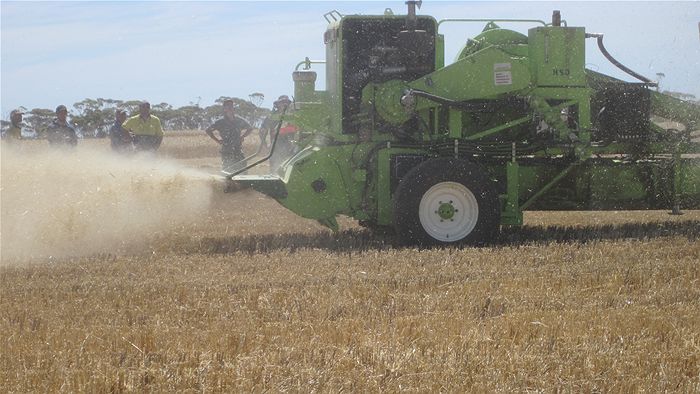
[ABC Rural 23 Feb, 2012 by Keiren McLeonard] -- It's called the Harrington Seed Destructor and was the brainchild of Darkan farmer, Ray Harrington, from Western Australia. It is nearing commercial production after involvement, testing and development by the Australian Herbicide Resistance Initiative (AHRI) at the University of Western Australia. Mr Harrington says he knew, when he turned to 100 per cent cropping, he wouldn't do any better than others in the cropping industry unless he tried to get ahead of the game and tackle weeds. "It's taken me fifteen years to get to where I am now. This is all about integrated weed management. The seed destructor isn't the silver bullet - just one in a raft of things to be done to stay in front of the weeds. "It crushes anything that goes into it. It's a rendering machine and will destroy anything. This machine renders the weed seed almost to dust." AHRI Research Associate Professor Michael Walsh says the machine been trialled and demonstrated during last year's harvest in South Australia, Victoria and New South Wales. "Initial tests done by the University showed 87 per cent of ryegrass put into the machine couldn't be found. Further improvements have been made to boost the kill rate. "Some farmers spend up to $450,000 annually on herbicides that must be applied twice a year. The destructor also alleviates the need for burning chaff dumps, narrow windrows or whole paddocks," according to Dr Walsh.[Photo:
The seed destructor preventing ryegrass seeds escaping during the harvest (Michael Walsh]
"It is another fantastic example of the inventiveness of innovative Australian farmers. They see a problem and try to solve it. "All we need to do is to follow along in some respects - take the inventions, evaluate them and help them progress to market."There's a long history of innovations that have helped Australian agriculture immensely. This potentially will be another one."
Trials of the destructor are funded by the Grains Research and Development Corporation and Ray Harrington insists this invention belongs to Australian grain growers. "Every grower that has delivered a tonne of grain pays a GRDC levy. This belongs to the Australian Grain Industry. The industry and grain growers have put the money in that has led to it becoming a reality," he says.Further trial sites will be used in March-April in NSW when season-opening rains stimulate weed germination.
Ray Harrington, inventor and farmer; Dr Michael Walsh, researcher, Australian Herbicide Resistance Initiative (AHRI)
Original source